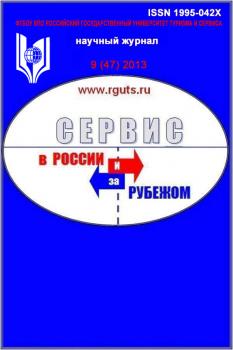The article presents results of the theoretical research of the customer equity. In accordance with them the corresponding concept is synthesized. The customer capital is identified as a system of stable and mutually beneficial relations of economic agents, buyers, consumers and staff of the enterprise. Such relations form the structure of the effective cooperation, which con- tributes to gaining by companies additional values. It is provides the customers’ repeated requests and attracting new ones, as well as increases competitive advantage and companies’ capitalization. We revealed the necessity of finding new forms of the customer equity, containing the elements of art, which will contribute to proposal of services, about which the consumers dream. The author based on the research result formulates the concept of use value of art, which induces to crave their presence again and again. An indicator of the art element use value is the value of the additional profits obtained due to the talented artistic expression. The customer equity is expedient to improve, focusing on the implementation of the popular theatrical services, ensuring their effective promotion using aggressive methods of direct marketing and personal sellings. Differentiation of the client capital services art use value should be made taking into account the interests, tastes, preferences of target customers, and their valuable relation to a particular style of art. Product differentiation by the elements of art inspires people´s lives. Talent, kindness, spirituality of senses, thoughts, and actions of the artist should be directed to the use of beauty flashes happening in the life for its meaningful creative heyday in the industrial production. The work was supported by the Russian Foundation for Humanities Grant №16-12-34504.
customer equity, service, system analysis, synthesis, differentiation, knowledge economy, target customer, art, use value, feelings
1. Beckwith T. Selling the invisible: a guide to modern marketing [Translated from English]. Moscow: Alpina Publishers, 2011. 224 p.
2. Brooking A. Intellectual capital [Translated from English]. Ed. by L. Kovalik. St. Petersburg: Piter, 2001. 228 p.
3. Gordeyko S.G. Monitoring of service quality as the part of the client portfolio management // Klienting i upravlenie klientskim portfelem [Clienting and client portfolios management]. 2013. №3. Pp. 162-171.
4. Dekker J. RIMA-A. Marketing theory and practice [Translated from English]. Under general editorship of G.L. Azoev and L.N. Derevyagina. Moscow, 2004.
5. Dyachenko A.V. Arts in consumer value services improvement // Servis v Rossii i za rubezhom [Services in Russia and Abroad]. 2013. №7 (45). Pp. 114-123.
6. Dyachenko A.V. Theatricality of hospitality // Servis v Rossii i za rubezhom [Services in Russia and Abroad]. 2013. №7 (45). Pp. 27-35.
7. Dyachenko M.A. Formation of intellectual capital in the imperatives of knowledge economy: preprint. Volgograd: Publishing House of VolgSU, 2009. 32 p.
8. Zizin A.S. The evolution of scientific views on the concept "Customer equity " // Sovremennye problemy nauki i obrazovanija [Modern problems of science and education]. 2013. №1; URL: www.science- education.ru/107-8529 (Accessed on: 14.04.2015).
9. Kandinsky V.V. On the spiritual in art. Moscow: Archimedes, 1992. 107 p.
10. Marx K. Critique of Political Economy. Moscow, 1978. 62 p.
11. Paul V. Comprehensive definition of art / Ob iskusstve [About art]. Moscow: Iskusstvo, 1976. 43 p.
12. Payne E. Manual for CRM: The path to the clients’ management improving. Minsk: Grevtsov Publisher, 2007. 384 p.
13. Sokolov K.O. Marketing role in the company´s customer equity formation // Vestnik OGU [Bulletin of OGU], №6(125). 2011. Pp. 74-77.
14. Solovyov V.S. The general sense of art / Filosofija iskusstva i literaturnaja kritika [Philosophy of art and literary criticism]. Moscow: Art, 1991. Pp. 73-89.
15. Tolstoy L.N. Sobranie sochinenij v 22 t. [Collected Works in 22 volumes]. Moscow: Imaginative Litera- ture, 1983. Vol. 15. Pp. 41-221.





